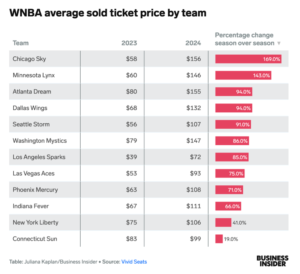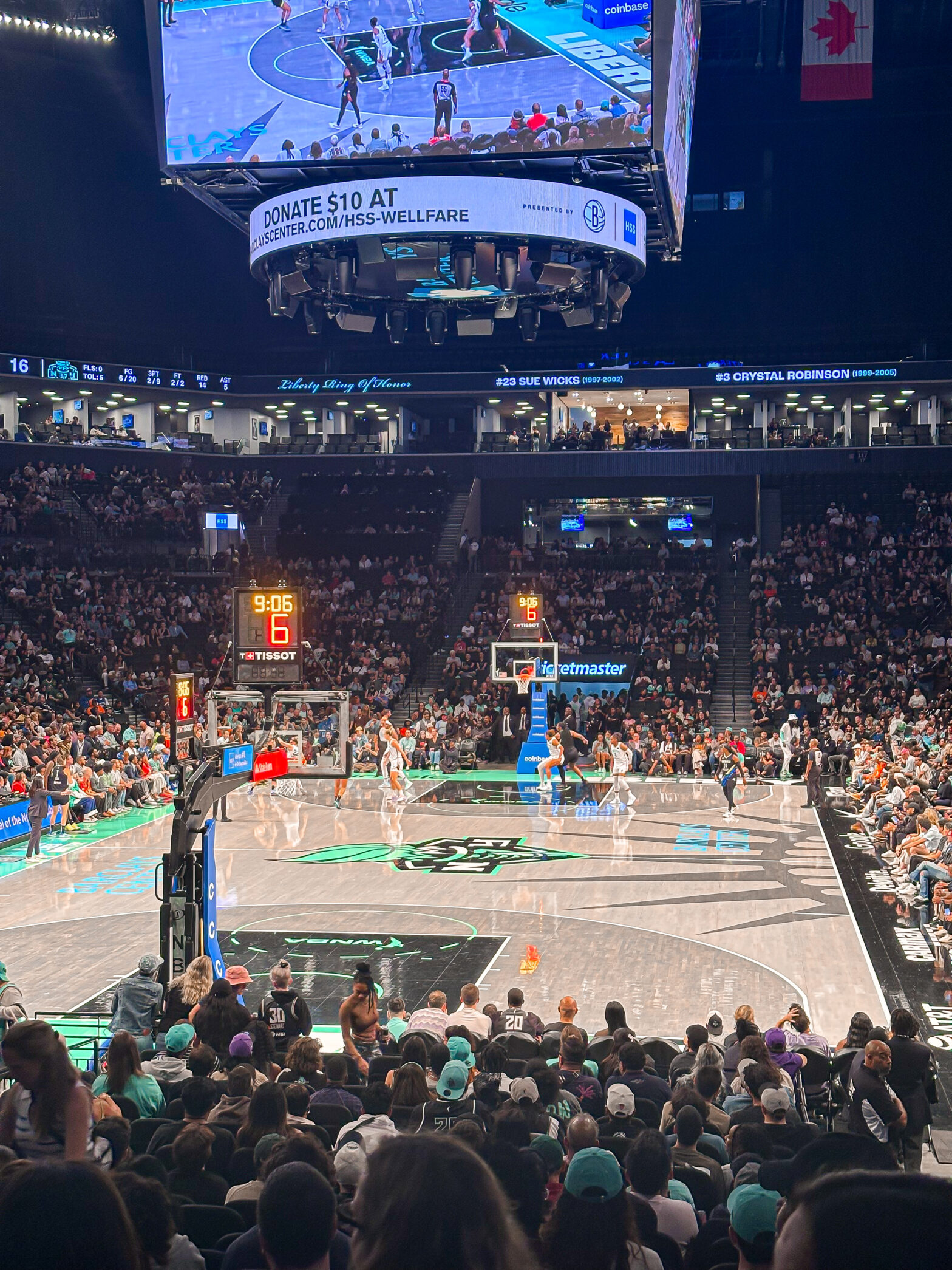It was a Thursday night in Barclays Center, the iconic stadium in Brooklyn, New York, right off the Atlantic Avenue stop. The stands buzzed with excitement, courtside seats gleamed with celebrity presence, and the shot clock ticked down from 24 seconds. The familiar roar of a live sports crowd filled the air—not for the Nets, but for the New York Liberty facing off against the Dallas Wings. Now, I am much more likely to be found hailing the prime religion of my home state (football). But that night, I stood in the stands, unsure if I should cheer for the home team or the team from my hometown. My unlikely attendance at this game is a product of a much larger trend, a turning point in the world of women’s basketball.
Rewind to March 2024.
The Women’s March Madness tournament was a thrilling showcase of athleticism—South Carolina Gamecocks defeated the University of Iowa Hawkeyes 87-75 to secure the national title, and Camilla Cardoso was named Most Outstanding Player of the Tournament. The entire tournament saw record-breaking attendance and viewership, with the final game drawing 24 million viewers, surpassing the 15 million who tuned in for the men’s final. Several household names emerged from the tournament: Angel Reese (LSU), Cameron Brink (Stanford), Juju Watkins (USC), Paige Bueckers (UConn), and the most prolific scorer in NCAA history, Caitlin Clark (Iowa). The hype around these stars, their powerhouse programs, and increased media exposure has allowed women’s basketball to command the attention it deserves.
This surge in patronage seamlessly transitioned into the WNBA as Brink, Reese, and Clark entered the league, pulling their devoted fans along with them. This pipeline from the thrilling end of March Madness directly into the WNBA season created a perfect storm of enthusiasm and engagement.
By the Numbers: A Cultural Shift
This isn’t just a fleeting moment; it’s a monumental shift. Average ticket prices for WNBA games have risen as demand skyrockets. More than half of all WNBA games this season have been sellouts, marking a 156% increase from last year, and arenas are filled to 94% capacity, a 17% rise from the previous year. This kind of turnout isn’t just seen in the stands—it’s mirrored in merchandise sales too. WNBAStore.com has set a record for the most single-season sales in its history, with overall transactions up 756% compared to the same time last year. Star players like Clark, Reese, and Brink are topping jersey sales, driving a 236% increase year-over-year.

But the impact extends beyond ticket sales and jerseys. The WNBA’s social media channels garnered 157 million video views in the first week of the season alone—the most viewed WNBA tip-off week on social media ever, up 380% from last year. This digital engagement reflects a growing, passionate fan base that is tuning in, showing up, and speaking out in support of women’s basketball.
A Broader Implication
These numbers are more than just metrics; they signal a broader cultural shift in sports fandom. Women’s basketball is no longer in the shadows—it’s stepping into the spotlight, challenging traditional norms and carving out a space that demands respect and recognition. The rising popularity isn’t just beneficial for the WNBA; it sets a precedent for the visibility and viability of women’s sports on a global scale. It challenges the long-standing disparities in media coverage, funding, and fan engagement that have defined women’s sports for decades.
This surge in popularity isn’t just a win for the players—it’s a win for fans, for future generations of athletes, and for a sports industry that is slowly but surely embracing a more inclusive vision of what greatness looks like. As I stood in the stands that night, unsure of which team to cheer for, I realized that I wasn’t just witnessing a game; I was witnessing history in the making.
